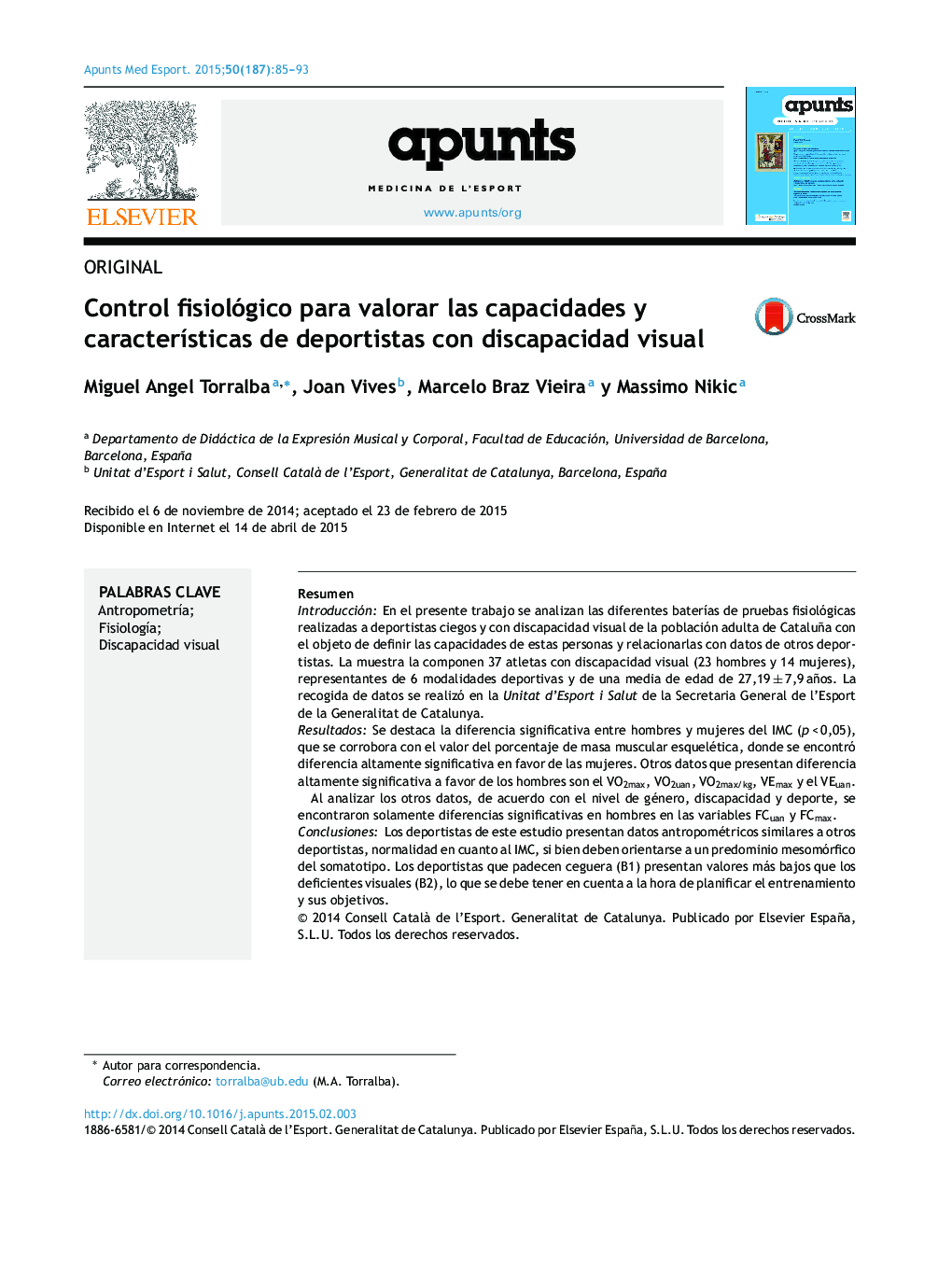| Article ID | Journal | Published Year | Pages | File Type |
|---|---|---|---|---|
| 2739425 | Apunts. Medicina de l'Esport | 2015 | 9 Pages |
ResumenIntroducciónEn el presente trabajo se analizan las diferentes baterías de pruebas fisiológicas realizadas a deportistas ciegos y con discapacidad visual de la población adulta de Cataluña con el objeto de definir las capacidades de estas personas y relacionarlas con datos de otros deportistas. La muestra la componen 37 atletas con discapacidad visual (23 hombres y 14 mujeres), representantes de 6 modalidades deportivas y de una media de edad de 27,19 ± 7,9 años. La recogida de datos se realizó en la Unitat d’Esport i Salut de la Secretaria General de l’Esport de la Generalitat de Catalunya.ResultadosSe destaca la diferencia significativa entre hombres y mujeres del IMC (p < 0,05), que se corrobora con el valor del porcentaje de masa muscular esquelética, donde se encontró diferencia altamente significativa en favor de las mujeres. Otros datos que presentan diferencia altamente significativa a favor de los hombres son el VO2max, VO2uan, VO2max/kg, VEmax y el VEuan.Al analizar los otros datos, de acuerdo con el nivel de género, discapacidad y deporte, se encontraron solamente diferencias significativas en hombres en las variables FCuan y FCmax.ConclusionesLos deportistas de este estudio presentan datos antropométricos similares a otros deportistas, normalidad en cuanto al IMC, si bien deben orientarse a un predominio mesomórfico del somatotipo. Los deportistas que padecen ceguera (B1) presentan valores más bajos que los deficientes visuales (B2), lo que se debe tener en cuenta a la hora de planificar el entrenamiento y sus objetivos.
IntroductionThe present study has analyzed different batteries of tests used for physiological assessment of blind and visually impaired athletes of the population from Catalonia. The main purpose was to define their capacities and associate them with information of other athletes. The sample consisted of 37 visually impaired athletes (23 men and 14 women), as representatives of six sports modes, with a mean age of 27.19 ± 7.9 years. The data collection was carried out in the Unit of Sports and Health of the General Secretary of Sports Government of Catalonia.ResultsA significant difference was noted between men and women in relation to BMI (P < .05), that corroborates with the percentage value of musculoskeletal mass, with a highly significant difference in favor of women. Other scientific data that shows highly relevant differences in favor of men are VO2max, VO2at, VO2max/kg, VEmax and the VEat.While analyzing other information, according to the level and gender, disability and sports, the only differences found were between men in connection with heart rate and maximum heart rate (HRat and HRmax).ConclusionThe athletes in this this study show similar anthropometric data to other athletes, normal as regards BMI, but it needs to be oriented towards a predominance of mesomorph somatotype. Athletes who are blind (B1) have lower values than the visually impaired (B2), that must be taken into account when planning training and goals.
